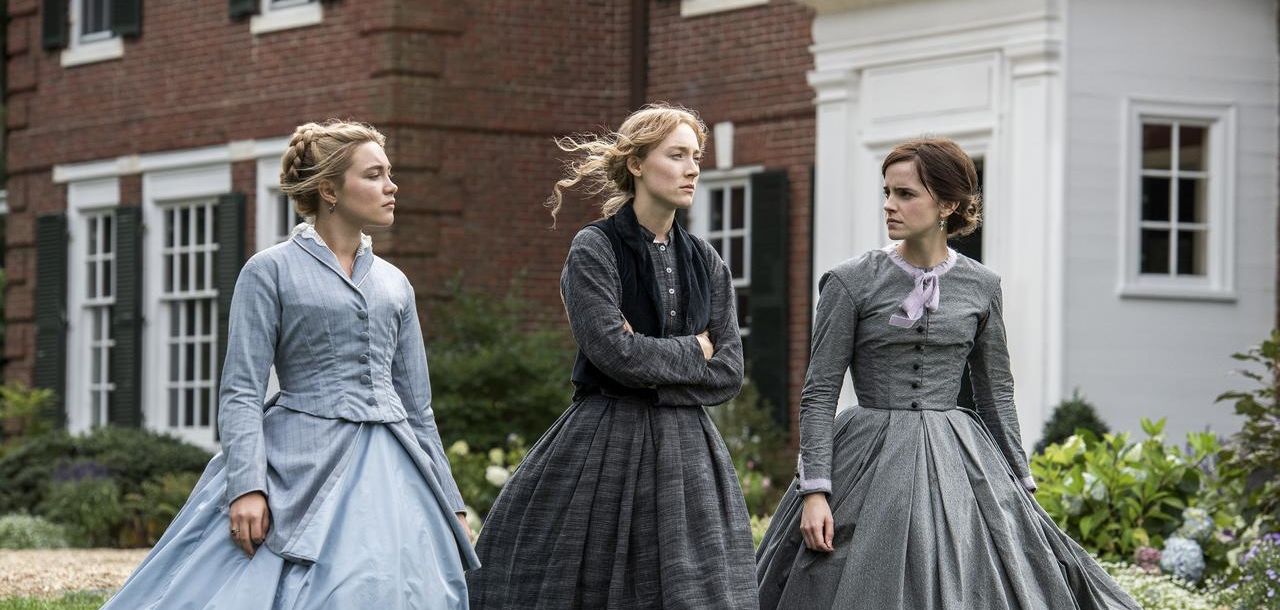Little Women is a period piece directed by Greta Gerwig and adapted from the timeless novel of the same name by Louisa May Alcott that follows the ‘domestic struggles and joys’ of the March family. Since its initial release on Christmas Day, the film has acquired immense critical acclaim and accolade. Yet, even with its six Oscar nominations, it feels as if a greater bout of praise is due.
The true nuance of the Little Women lies within Gerwig’s exploration of character, of course facilitated by visceral performances of the acting ensemble. A significant diversion from the other adaptations and arguably the source text itself is that each female character is given careful attention and hence a microcosmic purpose in the film. This is reflected not only in the relatively equalised screen time, but in the compositional choice to highlight and explore the hubris of each in a way that does not repaint and repackage it as merit, but rather displays it with tender honesty. Jo with her temperamentality, Meg with her insecurity and Amy with her self-centredness: each have their own streaks of villainy, and in allowing them to show these moments of wrongdoing, women on screen are portrayed as more human than ever before. Time and time again we see men with their own hubristic tendencies viewed through the lens of sympathy, and in denying women of this same internal conflict and ambiguity, we indeed deny their complexity and consequently their humanity. The final sister Beth and her mother Marmee intertwine to represent a state of perfection that can be characterised as hauntingly gentle. In existing as so, they act as a canvas of comparison for the other three sisters and therefore the audience, catalysing a self-reflection and introspection. In fact, it is this construction of Beth that makes the agony of her death seep into the audience. This is almost anomalistic for adaptations of Little Women, which are notorious for using this death as a means for plot movement rather than any meaning at all.
Strong characterisation may have dominated this film, and while what they each say shapes meaning, what is left unsaid has the tendency to resonate equally due to Gerwig’s directorial prioritisation of the unspoken. Moments such as Jo collecting herself by the doorway before entering the living room and facing a situation that represents the unattainability of her own desire, Laurie smiling shyly to himself in this same living room earlier as he simultaneously appreciates the familial intimacy of the March family and realises the sense of detachment within his own, and the final scene involving Jo and her poignant gaze, all constitute a vulnerability that is central to the film. This choice of centrality prompts us to consider our own silences and their significance more often as we are made aware of just how much time they constitute.
While I agree that it is Gerwig’s directional choices that gave rise to the film’s six Oscar nominations, which makes the choice to exclude her from a Best Director nomination both unprecedented and unsupported, I think that the script deserves greater recognition for its role in this success. The emotional specificity of the stage directions creates a poeticism that stretches into a poeticism of performance and subverts the positive connotations of the Brechtian Alienation Effect. This is truly encapsulated in ‘Jo feels the intense pleasure and pain of being seen by someone, of knowing that they know you’ as well as ‘crying, trying to explain herself.’ Further, the script’s inclusion of dashes is indicative of the importance of a cohesive and natural collective sound in this piece of work. These dashes provide a rhythm that gives a beat and breath that translate into what can only be described as a cinematic vitality felt by the audience in ever increasing degrees of depth as the film continues on.
All of the above ideas are embedded within a metafictional narrative and a pastiche of past and present, with the audience navigated through this pastiche by contrasting colour grading. The past is punctuated by saturation and a greater use of primary colours, whereas the future uses more muted tones and a peculiar absence of sunlight. This pastiche conveys the symbiotic relationship between temporalities; not only does the past influence the present, but simultaneously, the interpretation of the present and potential of the future are influenced by a memory of the past. These choices are a clear nod to the postmodern, and hence an acknowledgement of and a contribution to an artistic nostalgia characteristic of the 21st century, a subtler reason as to why Little Women is likely to resonate with modern audiences.
However, not all conventionally postmodern choices of the film quite reach the same level of success and sophistication as their counterparts. This is encapsulated in the directorial choice of breaking the fourth wall during the letters written to and from characters. The fact that this is a rare choice does garner some respect, however, it is difficult to completely understand and justify it. Would there be any difference if the standard overlay of narration was used? Questionable. Considering how intentional the rest of the film feels. One might be led to believe that the choice is nothing more than an act of postmodern tokenism that cannot be saved by the general intrigue generated by fourth wall breaks.
All in all, Little Women is a film that imbues emotion and narrative with such compositional affection that it feels almost natural for the viewer to reciprocate this affection.





